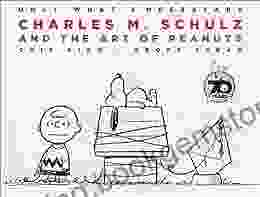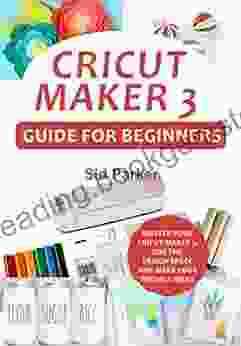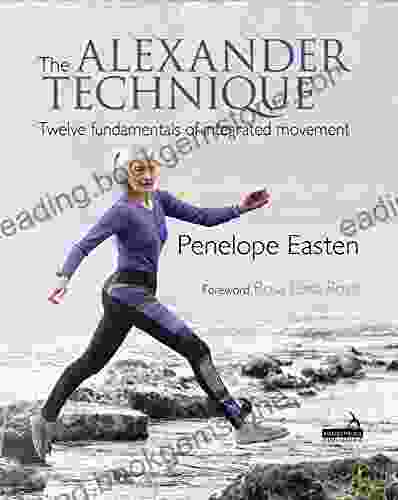The Alexander Technique: Twelve Fundamentals of Integrated Movement

The Alexander Technique is a method of improving posture, movement, and coordination. It is based on the idea that our bodies are designed to move in a balanced and efficient way, but that we often develop habits that interfere with this natural movement. The Alexander Technique can help us to relearn these natural movement patterns and to improve our overall health and well-being.
4.5 out of 5
| Language | : | English |
| File size | : | 80595 KB |
| Text-to-Speech | : | Enabled |
| Enhanced typesetting | : | Enabled |
| Word Wise | : | Enabled |
| Print length | : | 371 pages |
| Screen Reader | : | Supported |
The Alexander Technique was developed by Frederick Matthias Alexander, an Australian actor who suffered from chronic hoarseness. Alexander discovered that his hoarseness was caused by tension in his neck and throat, and he developed a series of exercises to help him release this tension. Alexander's exercises proved to be so effective that he began teaching them to others, and the Alexander Technique was born.
The Alexander Technique is based on twelve fundamental principles:
- Direction: The Alexander Technique teaches us to move with our heads, necks, and spines aligned in a neutral position. This alignment allows for maximum freedom of movement and prevents us from putting unnecessary strain on our bodies.
- Inhibition: The Alexander Technique teaches us to inhibit unnecessary muscular tension. We learn to let go of the muscles that are not needed for a particular movement, which allows us to move more efficiently and with less effort.
- Release: The Alexander Technique teaches us to release tension in our bodies. We learn to relax our muscles and to let go of the physical and mental tension that can interfere with our movements.
- Coordination: The Alexander Technique teaches us to coordinate our movements in a balanced and efficient way. We learn to use our entire bodies in a coordinated manner, which allows us to move more smoothly and with less effort.
- Balance: The Alexander Technique teaches us to maintain our balance in all of our movements. We learn to distribute our weight evenly and to use our core muscles to stabilize our bodies.
- Timing: The Alexander Technique teaches us to time our movements correctly. We learn to move at a pace that is neither too fast nor too slow, and we learn to anticipate the next movement in a sequence.
- Sequencing: The Alexander Technique teaches us to sequence our movements in a logical and efficient way. We learn to break down complex movements into smaller, more manageable steps, and we learn to move in a way that minimizes the risk of injury.
- Effort: The Alexander Technique teaches us to use the minimum amount of effort necessary to perform a movement. We learn to move with ease and grace, and we avoid putting unnecessary strain on our bodies.
- Posture: The Alexander Technique teaches us to maintain a good posture in all of our activities. We learn to sit, stand, and walk in a way that is healthy and comfortable, and we avoid the postural problems that can lead to pain and discomfort.
- Breathing: The Alexander Technique teaches us to breathe in a way that supports our movement. We learn to breathe deeply and rhythmically, and we learn to use our breath to help us relax and coordinate our movements.
- Mental awareness: The Alexander Technique teaches us to be mentally aware of our movements. We learn to pay attention to our bodies and to notice any tension or imbalances that may be interfering with our movement. This awareness allows us to make adjustments to our movements and to improve our overall movement patterns.
- Integration: The Alexander Technique teaches us to integrate all of the principles of the technique into our everyday lives. We learn to use the Alexander Technique in all of our activities, from walking to sitting to playing sports. This integration allows us to improve our overall movement patterns and to enjoy the benefits of the Alexander Technique in all aspects of our lives.
The Alexander Technique can be used to improve a wide range of conditions, including:
- Back pain
- Neck pain
- Headaches
- Shoulder pain
- Elbow pain
- Wrist pain
- Hand pain
- Hip pain
- Knee pain
- Ankle pain
- Foot pain
- Carpal tunnel syndrome
- Tennis elbow
- Golfer's elbow
- Shin splints
- Plantar fasciitis
- Sciatica
- Scoliosis
- Kyphosis
- Lordosis
- Arthritis
- Multiple sclerosis
- Parkinson's disease
- Cerebral palsy
- Stroke
- Traumatic brain injury
- Vocal problems
- Performance anxiety
- Sports injuries
The Alexander Technique is a safe and effective way to improve posture, movement, and coordination. It can help us to reduce pain, improve our overall health and well-being, and enjoy a more active and fulfilling life.
How to find an Alexander Technique teacher
If you are interested in learning the Alexander Technique, you can find a qualified teacher in your area by visiting the website of the American Society for the Alexander Technique (AmSAT) or the International Alexander Technique Association (IATA).
When choosing an Alexander Technique teacher, it is important to find someone who is experienced and qualified. You should also look for a teacher who is a good fit for your personality and learning style.
What to expect from an Alexander Technique lesson
An Alexander Technique lesson typically lasts for about an hour. During the lesson, your teacher will work with you to improve your posture, movement, and coordination. You will learn how to release unnecessary tension, how to coordinate your movements in a balanced and efficient way, and how to maintain a good posture in all of your activities.
The Alexander Technique is a gradual process, and it takes time to learn
4.5 out of 5
| Language | : | English |
| File size | : | 80595 KB |
| Text-to-Speech | : | Enabled |
| Enhanced typesetting | : | Enabled |
| Word Wise | : | Enabled |
| Print length | : | 371 pages |
| Screen Reader | : | Supported |
Do you want to contribute by writing guest posts on this blog?
Please contact us and send us a resume of previous articles that you have written.
 Best Book
Best Book Page Flip
Page Flip Bookshelf
Bookshelf Literary loom
Literary loom Chapter
Chapter Bookish
Bookish PageTurner
PageTurner Bibliophile
Bibliophile Story
Story Inkwell
Inkwell Bookworm
Bookworm Labyrinth
Labyrinth Plot Twist
Plot Twist Prose
Prose Paperback
Paperback Storyteller
Storyteller Sanctuary
Sanctuary Fiction
Fiction Reading
Reading Chronicle
Chronicle Read
Read Albert Corbeto
Albert Corbeto Daniel Kay Hertz
Daniel Kay Hertz Lee Craker
Lee Craker Alex Berenson
Alex Berenson Malka Older
Malka Older Huma Abedin
Huma Abedin A J Liebling
A J Liebling Charlene Tarbox
Charlene Tarbox Graham Mcneill
Graham Mcneill Anais Granofsky
Anais Granofsky Alberlin Torres
Alberlin Torres Kerry Trout
Kerry Trout D K Holmberg
D K Holmberg Joseph Kim
Joseph Kim Beth Alison Maloney
Beth Alison Maloney Timothy Samara
Timothy Samara Martin Edge
Martin Edge Siddharth Anbalagan
Siddharth Anbalagan Sarah Spencer
Sarah Spencer Greg Sestero
Greg Sestero Terez Mertes Rose
Terez Mertes Rose Kirsten Weiss
Kirsten Weiss Alastair Campbell
Alastair Campbell Peter Carey
Peter Carey Aki Choklat
Aki Choklat Bill Dixon
Bill Dixon Ivy Mix
Ivy Mix Robert Condon
Robert Condon Antonio Centeno
Antonio Centeno Louise Erdrich
Louise Erdrich Stefan Zweig
Stefan Zweig Afia Atakora
Afia Atakora Bernard Diederich
Bernard Diederich Brad Thor
Brad Thor Alda Sigmundsdottir
Alda Sigmundsdottir Judith M Heimann
Judith M Heimann Jesse Wente
Jesse Wente Stephen Bodio
Stephen Bodio Christian Stoll
Christian Stoll Rudy Rucker
Rudy Rucker Anne Vipond
Anne Vipond Anne Macleod
Anne Macleod Katja Schmitt
Katja Schmitt Emily Maker
Emily Maker Alex Hillkurtz
Alex Hillkurtz Tom Dunkel
Tom Dunkel Yahtzee Croshaw
Yahtzee Croshaw Richard Lloyd Parry
Richard Lloyd Parry Paula Marantz Cohen
Paula Marantz Cohen Alastair Vere Nicoll
Alastair Vere Nicoll Alexa Martin
Alexa Martin V A Lewis
V A Lewis Mia P Manansala
Mia P Manansala Evanna Lynch
Evanna Lynch Alexa West
Alexa West Mark William Shaw
Mark William Shaw Juhea Kim
Juhea Kim Geninne Zlatkis
Geninne Zlatkis Christian Cameron
Christian Cameron Yvvette Edwards
Yvvette Edwards Alex Dudok De Wit
Alex Dudok De Wit Akwaeke Emezi
Akwaeke Emezi Mark Panek
Mark Panek C M Muller
C M Muller Betty Reid Soskin
Betty Reid Soskin Jim Hinckley
Jim Hinckley F Sehnaz Bac
F Sehnaz Bac Elizabeth Mcpherson
Elizabeth Mcpherson Michael Samerdyke
Michael Samerdyke Michael Weeks
Michael Weeks Matt Dickinson
Matt Dickinson J R R Tolkien
J R R Tolkien Luke F D Marsden
Luke F D Marsden Aleron Kong
Aleron Kong Andrew Morton
Andrew Morton Tim Bonyhady
Tim Bonyhady Aleksandr Solzhenitsyn
Aleksandr Solzhenitsyn Lon Varnadore
Lon Varnadore Neil Wilson
Neil Wilson Greg Jenkins
Greg Jenkins Georgia Purdom
Georgia Purdom Emilie Conrad Da Oud
Emilie Conrad Da Oud Don Yaeger
Don Yaeger Al Sharpton
Al Sharpton Laurie Birnsteel
Laurie Birnsteel Ava Reid
Ava Reid Alecia J
Alecia J Joan Druett
Joan Druett C N Phillips
C N Phillips John French
John French Philip Norman
Philip Norman J Pal
J Pal Nancy Beiman
Nancy Beiman Thomas Huhti
Thomas Huhti Alan Grainger
Alan Grainger Anna M Church
Anna M Church Tyler Green
Tyler Green Nihon Vogue
Nihon Vogue Aimee Nezhukumatathil
Aimee Nezhukumatathil Margaret Mitchell
Margaret Mitchell Richard Ayoade
Richard Ayoade Edmund Morris
Edmund Morris L Loren
L Loren Ella Frances Sanders
Ella Frances Sanders Simon Callow
Simon Callow D Rus
D Rus Ak Turner
Ak Turner Jessica Lee
Jessica Lee Keila Rowe
Keila Rowe Alan Sanders
Alan Sanders Gareth C Meadows
Gareth C Meadows Cassia Cogger
Cassia Cogger Peter Warner
Peter Warner Saleem H Ali
Saleem H Ali Rob Stone
Rob Stone Paul Curry
Paul Curry Peter Burke
Peter Burke Paul Austin
Paul Austin Alastair Reynolds
Alastair Reynolds Bart Rulon
Bart Rulon Tim Lawrence
Tim Lawrence Eric Goldberg
Eric Goldberg Marco Leonel Garcia Gonzalez
Marco Leonel Garcia Gonzalez Colette Pitcher
Colette Pitcher Ted Okuda
Ted Okuda David Conyers
David Conyers Geoff Hann
Geoff Hann Josh Golding
Josh Golding Chip Kidd
Chip Kidd Ally Morin
Ally Morin Antony Sher
Antony Sher Francis M Higman
Francis M Higman Despina Stratigakos
Despina Stratigakos Roxana Robinson
Roxana Robinson Julie Collins
Julie Collins Andrew Solomon
Andrew Solomon Brien Foerster
Brien Foerster John Ingledew
John Ingledew Luciano Thomazelli
Luciano Thomazelli My Daily Spanish
My Daily Spanish Sara Barnes
Sara Barnes Living Languages
Living Languages Robert Arp
Robert Arp Alex Albrinck
Alex Albrinck 1st Edition Kindle Edition
1st Edition Kindle Edition Katie Daisy
Katie Daisy Osman Yousefzada
Osman Yousefzada A J Verdelle
A J Verdelle Matthew Bourne
Matthew Bourne Jason Cordova
Jason Cordova Eden Dawn
Eden Dawn Claudia Rankine
Claudia Rankine Anita Friedman
Anita Friedman Alan Maimon
Alan Maimon Maturin Murray Ballou
Maturin Murray Ballou Barbara Brownie
Barbara Brownie Lee Goldberg
Lee Goldberg Ajax Lygan
Ajax Lygan Howexpert Press
Howexpert Press Stuart Taylor
Stuart Taylor Alan Carr
Alan Carr Joseph Campbell
Joseph Campbell Abdul El Sayed
Abdul El Sayed Jean Pederson
Jean Pederson Bob Rohm
Bob Rohm Randy Palmer
Randy Palmer Mariusz Krukowski
Mariusz Krukowski Faith Hunter
Faith Hunter Vinny Sagoo
Vinny Sagoo Jeffrey Spivak
Jeffrey Spivak Jeff Lieberman
Jeff Lieberman Abdulrazak Gurnah
Abdulrazak Gurnah Mary Brooks Picken
Mary Brooks Picken Robert Marshall
Robert Marshall Amanda Lawrence
Amanda Lawrence Josh Holliday
Josh Holliday Junheng Li
Junheng Li Marco Livingstone
Marco Livingstone Michele Bousquet
Michele Bousquet Alan Smith
Alan Smith Paul J Pastor
Paul J Pastor Shelli Marie
Shelli Marie Alan Colquhoun
Alan Colquhoun Susan Evenson
Susan Evenson Keisha Ervin
Keisha Ervin George Bernard Shaw
George Bernard Shaw Tracy Michaud
Tracy Michaud Ella Blake
Ella Blake Robert Byron
Robert Byron Agatha Christie
Agatha Christie Jack Jewers
Jack Jewers Wakefield Poole
Wakefield Poole Alejandro Jodorowsky
Alejandro Jodorowsky Geert Mak
Geert Mak William Gaskill
William Gaskill Jennifer Egan
Jennifer Egan A R Corbin
A R Corbin Massoud Hayoun
Massoud Hayoun Alex Zadeh
Alex Zadeh Veronica Sekules
Veronica Sekules Sarah Polley
Sarah Polley Rich Polanco
Rich Polanco Ninni Holmqvist
Ninni Holmqvist Roberto Lovato
Roberto Lovato Eric Sprinkle
Eric Sprinkle Natasha Boyd
Natasha Boyd John Gold
John Gold Amy Latta
Amy Latta Pam Cook
Pam Cook C M Carney
C M Carney Chloe Garner
Chloe Garner A J Markam
A J Markam Peter Gethers
Peter Gethers Richard Doetsch
Richard Doetsch Patrick J Flannigan
Patrick J Flannigan Michael Reyes
Michael Reyes A D Davies
A D Davies Alan Rabinowitz
Alan Rabinowitz Gerhard Haase Hindenberg
Gerhard Haase Hindenberg Seth Kugel
Seth Kugel Anne Glenconner
Anne Glenconner Gail Pool
Gail Pool Margaret Shepherd
Margaret Shepherd Anne Thomas Soffee
Anne Thomas Soffee Samantha Downing
Samantha Downing Heidi Moksnes
Heidi Moksnes Cecil Jenkins
Cecil Jenkins Adam Nayman
Adam Nayman R J Patterson
R J Patterson Alex Tizon
Alex Tizon Frank Catalano
Frank Catalano Robyn Blakeman
Robyn Blakeman S Elizabeth
S Elizabeth James Willis
James Willis Max Eisen
Max Eisen Sandie Heron
Sandie Heron Lama Rod Owens
Lama Rod Owens Judy A Bernstein
Judy A Bernstein Jennie Allen
Jennie Allen Shaul Kelner
Shaul Kelner James S A Corey
James S A Corey Lawrence F Lihosit
Lawrence F Lihosit Gay Talese
Gay Talese Alan Dean Foster
Alan Dean Foster Craig Johnson
Craig Johnson Allison Pataki
Allison Pataki Mark Christopher Weber
Mark Christopher Weber Harry Thurston
Harry Thurston Michael Booth
Michael Booth N Dia Rae
N Dia Rae Adeline Lim
Adeline Lim William C Meadows
William C Meadows Alan Verskin
Alan Verskin Aer Ki Jyr
Aer Ki Jyr Glyn Macey
Glyn Macey Aileen Bordman
Aileen Bordman Sherry Turkle
Sherry Turkle Albert Blasco Peris
Albert Blasco Peris Felix R Savage
Felix R Savage Alex Tannen
Alex Tannen Cynthia D Yoder
Cynthia D Yoder Rocio Carvajal
Rocio Carvajal Mary Monroe
Mary Monroe Alejandro Zambrano Sevillano
Alejandro Zambrano Sevillano Alex Hibbert
Alex Hibbert Jane Patrick
Jane Patrick Stuart Thornton
Stuart Thornton Kindle Edition
Kindle Edition Scott Bukatman
Scott Bukatman John Perrier
John Perrier Matthew Reilly
Matthew Reilly Aurora Levins Morales
Aurora Levins Morales Alex Wagner
Alex Wagner Tom Scocca
Tom Scocca Alan Veale
Alan Veale Akaisha Kaderli
Akaisha Kaderli Winifred Brown
Winifred Brown Marian Filar
Marian Filar Smashing Magazine
Smashing Magazine Naughty Dog
Naughty Dog Dave Addey
Dave Addey Rachel Mcmillan
Rachel Mcmillan St Paul S Greek Orthodox Church
St Paul S Greek Orthodox Church Julian Hoxter
Julian Hoxter Laurie Schneider Adams
Laurie Schneider Adams Fiona Maccarthy
Fiona Maccarthy Dale Olausen
Dale Olausen Herman Wouk
Herman Wouk Matt Ortile
Matt Ortile Harlow Robinson
Harlow Robinson Fadel Abuelula
Fadel Abuelula Karl Beecher
Karl Beecher Eliane Strosberg
Eliane Strosberg Inman Learning
Inman Learning Diane Mierzwik
Diane Mierzwik Irmgard Bartenieff
Irmgard Bartenieff Ben D Over
Ben D Over Ken Layne
Ken Layne E C Godhand
E C Godhand Jeanne Filler Scott
Jeanne Filler Scott Gregory Benford
Gregory Benford Rozsika Parker
Rozsika Parker Bill Manley
Bill Manley Alex Kerr
Alex Kerr Lynsey Addario
Lynsey Addario Richard Poulin
Richard Poulin Lavonne Mueller
Lavonne Mueller Rosa Park
Rosa Park Bradley Wright
Bradley Wright Alberto Manguel
Alberto Manguel John Gonzalez
John Gonzalez Alistair Urquhart
Alistair Urquhart Alex Kava
Alex Kava Magunta Dayakar
Magunta Dayakar M Osman Siddique
M Osman Siddique Alex Jennings
Alex Jennings Ntozake Shange
Ntozake Shange G J Ogden
G J Ogden Kazuaki Tanahashi
Kazuaki Tanahashi Rachael Cerrotti
Rachael Cerrotti George Monbiot
George Monbiot Nicki Grace
Nicki Grace Tom Weaver
Tom Weaver Alex Robinson
Alex Robinson Christopher P Jones
Christopher P Jones Viola Shipman
Viola Shipman Roland Nyns
Roland Nyns Akiko Busch
Akiko Busch Martin Mosebach
Martin Mosebach Ann Maclean
Ann Maclean Tom Wood
Tom Wood Alex Danchev
Alex Danchev Haroon Moghul
Haroon Moghul Danie Ware
Danie Ware Dima Ghawi
Dima Ghawi Andy Steves
Andy Steves Michelle Loucadoux
Michelle Loucadoux Gerald L Kooyman
Gerald L Kooyman Alec Potrero
Alec Potrero Robin Meloy Goldsby
Robin Meloy Goldsby Albert Samaha
Albert Samaha Eddie R Hicks
Eddie R Hicks Guy Kawasaki
Guy Kawasaki Michael Anderson
Michael Anderson Reshonda Tate Billingsley
Reshonda Tate Billingsley A K Duboff
A K Duboff Scott Harwood
Scott Harwood J D Adams
J D Adams Adrien Gombeaud
Adrien Gombeaud Tamara Thiessen
Tamara Thiessen Alan Bachmann
Alan Bachmann Alan Laycock
Alan Laycock Sarah Ferguson
Sarah Ferguson Mary Ann Shaffer
Mary Ann Shaffer Monica Russel
Monica Russel Torben Landskrone
Torben Landskrone Masahiro Kasahara
Masahiro Kasahara Anthony Doerr
Anthony Doerr Alfons Kaiser
Alfons Kaiser Wes Mcdowell
Wes Mcdowell Al Saadiq Banks
Al Saadiq Banks Paul Clark
Paul Clark Sean Hall
Sean Hall Akira Kurosawa
Akira Kurosawa Herman Melville
Herman Melville Jennifer Sewing
Jennifer Sewing Richard Hunt
Richard Hunt Michael J Fox
Michael J Fox Stefano Mancuso
Stefano Mancuso Alex Moore
Alex Moore Charles Mccormac
Charles Mccormac Samuel R Delany
Samuel R Delany David Morrell
David Morrell A E Filby
A E Filby Kim E Nielsen
Kim E Nielsen William Golding
William Golding Ann Mah
Ann Mah Noam Oswin
Noam Oswin Roger Bennett
Roger Bennett Adrien Clautrier
Adrien Clautrier Nancy Milford
Nancy Milford Rhonda K Garelick
Rhonda K Garelick Charles De Lint
Charles De Lint Alan M Davis
Alan M Davis Adrienne Keene
Adrienne Keene Paul Hadden
Paul Hadden Adrian Dater
Adrian Dater Markus S Agerer
Markus S Agerer Nicolas Sellens
Nicolas Sellens Ann Torrence
Ann Torrence Garret Romaine
Garret Romaine Tom Swimm
Tom Swimm Jack L Grossman
Jack L Grossman Alan Jacobson
Alan Jacobson Chimamanda Ngozi Adichie
Chimamanda Ngozi Adichie Ed Miller
Ed Miller Nikki Giovanni
Nikki Giovanni Belinda Smith Cicarella
Belinda Smith Cicarella Candida R Moss
Candida R Moss Alex Grey
Alex Grey 3rd Edition Kindle Edition
3rd Edition Kindle Edition Donna Digiuseppe
Donna Digiuseppe Alex Foster
Alex Foster Peter Samuel
Peter Samuel John Maloof
John Maloof Giannalberto Bendazzi
Giannalberto Bendazzi Sabrina Devonshire
Sabrina Devonshire Paul Hallas
Paul Hallas Amanda Gorman
Amanda Gorman Bernard Cornwell
Bernard Cornwell Kayleigh Mcenany
Kayleigh Mcenany Hob Osterlund
Hob Osterlund Michael Sayman
Michael Sayman Alejandra Viscarra
Alejandra Viscarra Christopher G Nuttall
Christopher G Nuttall Gregory Michie
Gregory Michie Aleksandar Nedeljkovic
Aleksandar Nedeljkovic Michael Connelly
Michael Connelly Franklyn Griffiths
Franklyn Griffiths Fiona Humberstone
Fiona Humberstone Afua Hirsch
Afua Hirsch Harold Holzer
Harold Holzer Kathleen Brady
Kathleen Brady Richard F Weyand
Richard F Weyand Grace Lees Maffei
Grace Lees Maffei Dominique Dupuy
Dominique Dupuy Aimee Alexander
Aimee Alexander Gary Jennings
Gary Jennings Linda Bloomfield
Linda Bloomfield Kimiko Kitani
Kimiko Kitani Azalea Ellis
Azalea Ellis Arlene Croce
Arlene Croce John Phillip Santos
John Phillip Santos Al Davidson
Al Davidson Alain Kerzoncuf
Alain Kerzoncuf Erika Hecht
Erika Hecht Jeffery H Haskell
Jeffery H Haskell Laurel Hart
Laurel Hart Cherrie Moraga
Cherrie Moraga Thomas Geve
Thomas Geve Aleksandar Hemon
Aleksandar Hemon Robert Clark
Robert Clark Heather Hutchison
Heather Hutchison Julian Bell
Julian Bell Giovanni Iannoni
Giovanni Iannoni Adele P Margolis
Adele P Margolis Laurieann Gibson
Laurieann Gibson Misba
Misba Nancy Marguerite Anderson
Nancy Marguerite Anderson Jennifer Lilya
Jennifer Lilya Aisha Sabatini Sloan
Aisha Sabatini Sloan Russell Staiff
Russell Staiff Ricardo Victoria
Ricardo Victoria Allison Moore
Allison Moore Brenda Barrett
Brenda Barrett Frances Kai Hwa Wang
Frances Kai Hwa Wang Alex Gough
Alex Gough K J Gillenwater
K J Gillenwater Aeham Ahmad
Aeham Ahmad Learning Through Activities
Learning Through Activities Dave Cornthwaite
Dave Cornthwaite Hayley Mills
Hayley Mills Charles Chipiez
Charles Chipiez Tupac Shakur
Tupac Shakur Armond T Joyce
Armond T Joyce Alex Kotlowitz
Alex Kotlowitz James Baldwin
James Baldwin Akiva Teddy Macleod
Akiva Teddy Macleod Tod Benoit
Tod Benoit Sarah Crafts
Sarah Crafts Ramy Vance
Ramy Vance Adrian Tchaikovsky
Adrian Tchaikovsky Peter Gray
Peter Gray Danielle Donaldson
Danielle Donaldson Eileen Sorg
Eileen Sorg P T Books
P T Books Robert M Kerns
Robert M Kerns Amy Tan
Amy Tan Jack Anderson
Jack Anderson Tara Ellis
Tara Ellis Albert Woodfox
Albert Woodfox Gary Zacny
Gary Zacny Adam Roberts
Adam Roberts Francisco Martin Rayo
Francisco Martin Rayo Stephen Davis
Stephen Davis Cheech Marin
Cheech Marin Alan Murphy
Alan Murphy Terry Barrett
Terry Barrett Laura Galloway
Laura Galloway Nikolaus Julius Weichselbaumer
Nikolaus Julius Weichselbaumer Elizabeth Holmes
Elizabeth Holmes Ginger Zee
Ginger Zee A J Alonzo Wind
A J Alonzo Wind Bobby Love
Bobby Love Kelly Bowen
Kelly Bowen Justin Monroe
Justin Monroe Hans Keilson
Hans Keilson Sjeng Scheijen
Sjeng Scheijen Troy Taylor
Troy Taylor Danny Newman
Danny Newman John Varley
John Varley Christoph Brueck
Christoph Brueck Alicia Drake
Alicia Drake A J Diamond
A J Diamond Dustin Lynx
Dustin Lynx Mary Karr
Mary Karr Geronimo
Geronimo Lauren D Schmalz
Lauren D Schmalz Fanny Kelly
Fanny Kelly Adele Wagstaff
Adele Wagstaff Jessica Fanigliulo
Jessica Fanigliulo George Smith
George Smith Rian Hughes
Rian Hughes Fluent In Korean
Fluent In Korean Alex White
Alex White Soon Y Warren
Soon Y Warren
Light bulbAdvertise smarter! Our strategic ad space ensures maximum exposure. Reserve your spot today!

 Brenton CoxThe Grail Quest: A Timeless Tale of Adventure, Sacrifice, and the Search for...
Brenton CoxThe Grail Quest: A Timeless Tale of Adventure, Sacrifice, and the Search for... Theodore MitchellFollow ·16k
Theodore MitchellFollow ·16k Gil TurnerFollow ·15k
Gil TurnerFollow ·15k Felix HayesFollow ·14.1k
Felix HayesFollow ·14.1k Samuel BeckettFollow ·3.3k
Samuel BeckettFollow ·3.3k Marc FosterFollow ·6.9k
Marc FosterFollow ·6.9k Octavio PazFollow ·14.5k
Octavio PazFollow ·14.5k Emmett MitchellFollow ·15.9k
Emmett MitchellFollow ·15.9k Gavin MitchellFollow ·19k
Gavin MitchellFollow ·19k

 Stephen King
Stephen KingJudge This: The Unforgettable Book Covers of Chip Kidd
Chip Kidd is one of the most...

 Curtis Stewart
Curtis StewartSovereignty, Security, and Stewardship: Interwoven...
The geopolitical landscape of the 21st...

 Jay Simmons
Jay SimmonsOnly What Necessary: The Ultimate Guide to Minimalist...
Unveiling the Transformative...

 Austin Ford
Austin FordMaster Your Cricut Maker: Unleashing the Power of Design...
Embracing the Cricut...
4.5 out of 5
| Language | : | English |
| File size | : | 80595 KB |
| Text-to-Speech | : | Enabled |
| Enhanced typesetting | : | Enabled |
| Word Wise | : | Enabled |
| Print length | : | 371 pages |
| Screen Reader | : | Supported |














